Editorials
‘B&B’ – This Culture Clash Thriller from 2017 Offers Hitchcockian Suspense

No one likes a sore loser, but perhaps sore winners are even worse. As seen in B&B, the big-screen debut from TV writer and director Joe Ahearne, a couple cannot simply accept their victory and move on with their lives. Quite the opposite: here Tom Bateman and Sean Teale’s characters return to the scene of the crime. The crime, of course, being one based on prejudice. However as much as B&B feels of its time, on account of the ripped-from-headlines setup, this twisting thriller from 2017 cooks up a timeless degree of suspense.
Ahearne, who was more inspired by the general social and political landscape than any single event, taps into a hot issue that still comes up today. The denial of service to those from the LGBTQ+ community continues to happen even in areas with anti-discrimination laws in place. So although Marc (Bateman) and Fred (Teale) have won their lawsuit against the owner of the titular B&B in question, there remains what seems like a Sisyphean task. Bigotry will persist well into the main characters’ lifetime. This explains why they, particularly Marc, are always in defense mode and intolerant of any infraction. They know something like this could happen again. That mentality adds to the paranoiac quality of this film and drives it toward a surprising outcome.
B&B is not one to waste its or the audience’s time. A newspaper with an unmissable front-page headline brings viewers up to speed: “Homosexuals sue Christian for double bed.” That then leads into a questionable move on the characters’ part; Marc and Fred, now married, book another stay at the offending inn, St. Jude’s B&B. It has been a year since the incident, and now the plaintiffs have come to rub their triumph in the face of the defendant, Paul McGann’s Bible-thumping character Josh. Admittedly, Fred would have been satisfied with celebrating elsewhere, but Marc is more adamant about having this uncomfortable reunion. That grating and smug behavior of his, as well as Fred’s profound ability for jumping to conclusions, give these characters some edge and the audience more to chew on.
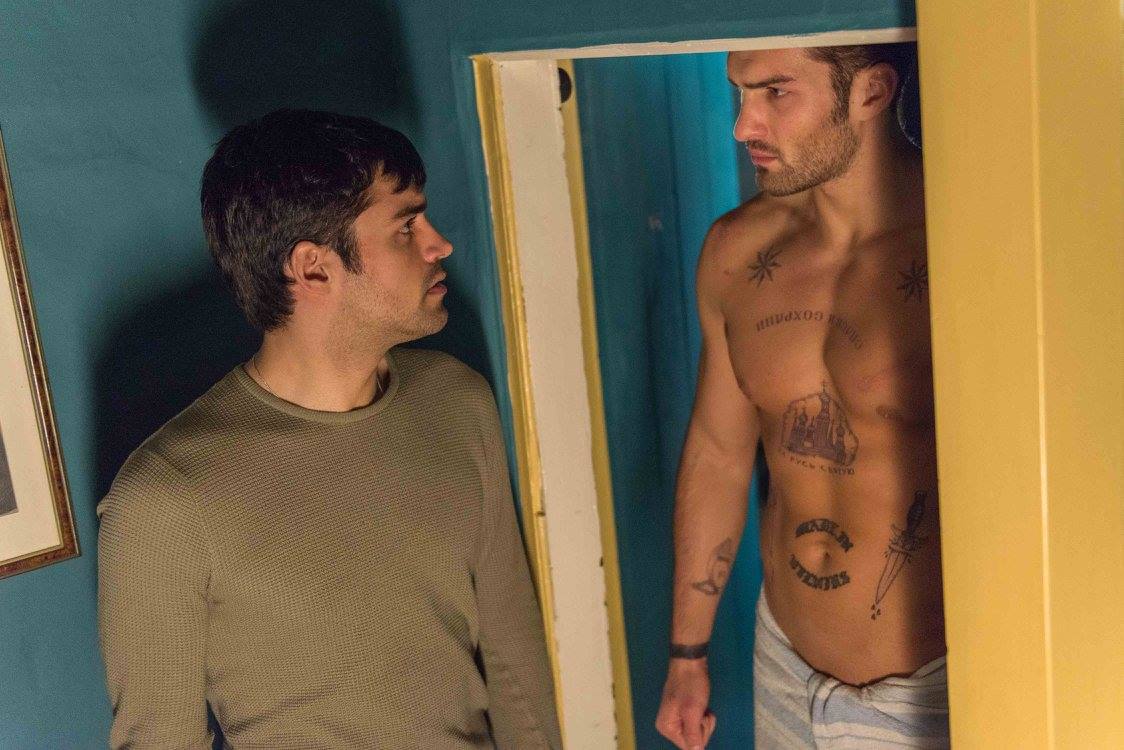
Image: Sean Teale’s character runs into James Tratas’ character in B&B.
The tension is inescapable with the story and interactions primarily taking place inside this isolated inn. And one with no safe spaces to hide in, no less. Ahearne establishes the suffocating atmosphere early on, with the camera’s focus getting tighter and tighter, and these already small rooms becoming increasingly crowded. Viewers are trapped with these characters and their discord. Later on, B&B temporarily leaves the confines of St. Jude’s and heads for a spacious and somber cruising park. The change in scenery, albeit for a short while, allows for a different variety of chills.
Marc & Fred and Josh’s hostilities alone are not substantial enough to support an entire feature, so two more characters are introduced: Josh’s son Paul (Callum Woodhouse) and a guest (James Tratas) who showed up without a reservation. Along with them are additional subplots that give the film its ultimate zigzag characteristic. The introduction of these other characters comes with a brief but welcome amount of distraction from the friction with the host; Marc and Fred learn their presence is only making Paul’s life as a closeted teen harder, and the couple’s incidental competition for best gaydar, as they size up the ambiguous Alexei (Tratas), provides a spot of comic relief. Yet after Fred’s sudden suspicion — which is both irrational and somewhat accurate — leads him to believe Paul is risking his life for a hookup with the inn’s only other guest, he and Marc become embroiled in a not-so-cozy mystery.
That intimate closeup featured so visibly on the film’s poster suggests a different type of thriller. Yet in actuality and with pleasant haste, Ahearne directs us away from the realistic culture clash on deck and swerves into a more general audience-accessible but still rather specific story. One only feasible because of the preexisting agitation between these three men. Even as B&B moves into genre territory though, the battle of beliefs is always on the minds of the couple; amid the bending mystery in store, that thickening air of distrust is affected by Marc and Fred’s constant misgivings of Josh, especially in light of the innkeeper’s unexpected self-interest.
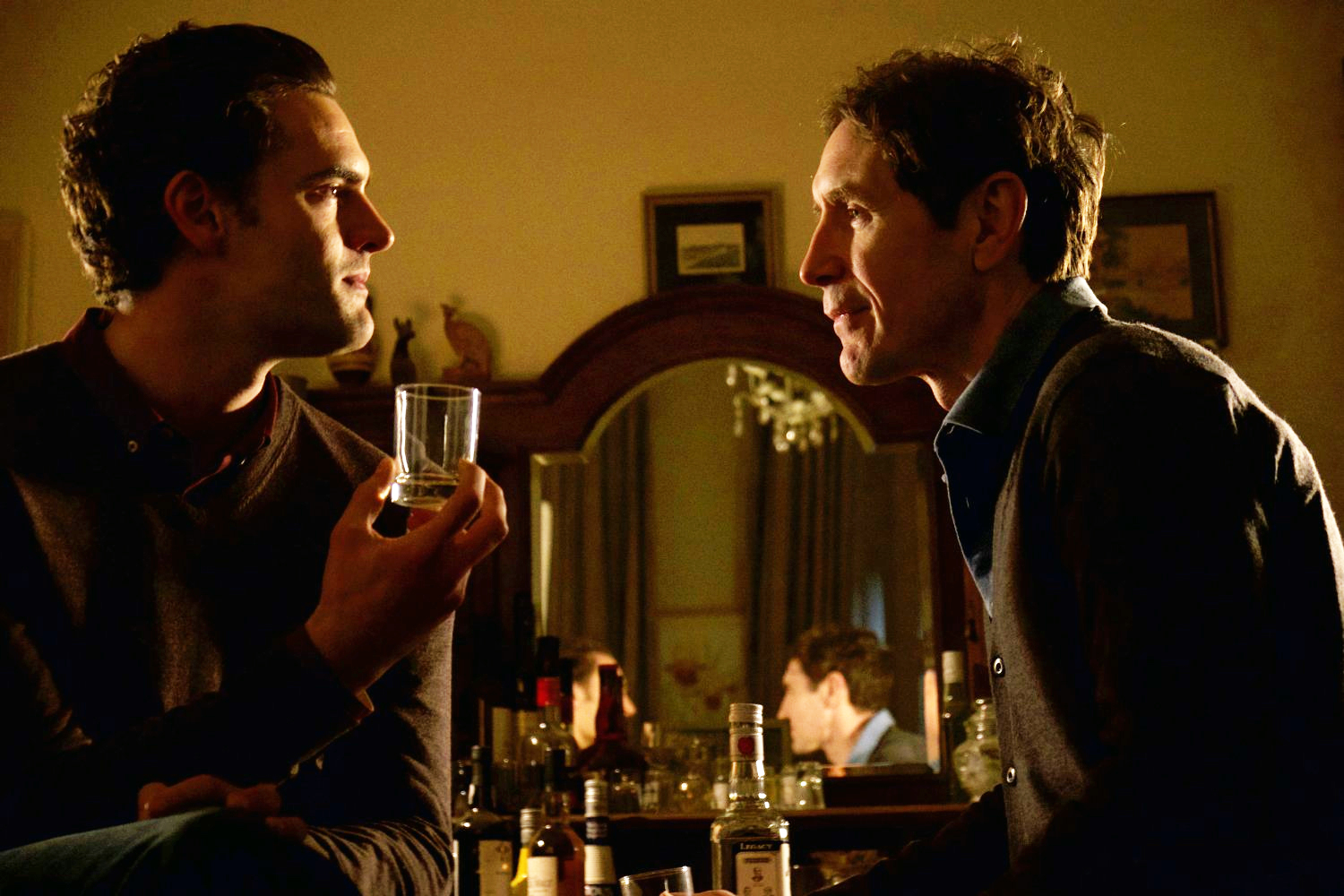
Image: Tom Bateman’s character searches for some kind of understanding with Paul McGann’s character in B&B.
B&B makes good use of Bateman and Teale’s characters, whose differences in personality fuel the film’s second (and better) half. One’s need to always be right and his penchant for snooping reveals significant clues along the way, whereas the other brings hell upon them both by acting heroically. Although a more tangible plot takes over after Fred goes to rescue Josh’s son from what looks to be a potential gay bashing, the writing never abandons developing its characters. Irksome as they may be, they are an interesting lot. All of whom Ahearne shows sympathy for in spite of his personal values. That lack of a black-and-white narrative certainly gives cause for reflection.
The poster’s tagline “They Made Their Bed… Now They Have to Die in It” is squandered here, seeing as the story never takes on any semblance of a conventional suspenser. The film also doesn’t qualify as a standard whodunit; in hindsight, “whydunit” is a muchly preferred description. Nevertheless, if not for its clearly defined and modern timestamp, B&B delivers clever and effective thrills in the vein of classic Hitchcock films.
Horrors Elsewhere is a recurring column that spotlights a variety of movies from all around the globe, particularly those not from the United States. Fears may not be universal, but one thing is for sure — a scream is understood, always and everywhere.
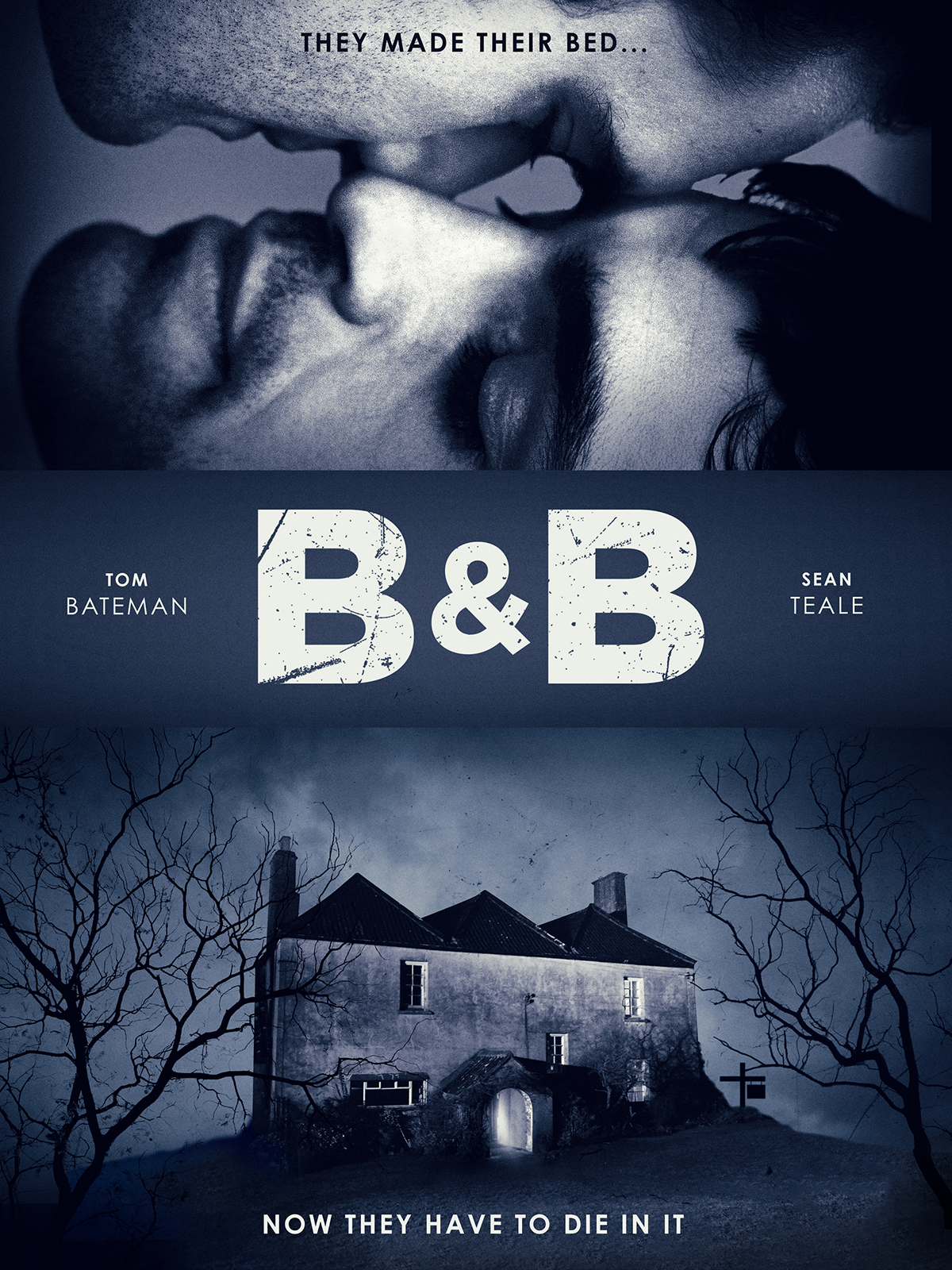
Image: The “They Made Their Bed… Now They Have to Die in It” poster for B&B.

Editorials
‘The Strangers: Chapter 1’ – Six Things We Learned from the Blu-ray Commentary

Lionsgate’s The Strangers: Chapter 1 launches a reboot trilogy based on the 2008 home invasion film, all three movies shot simultaneously under the direction of Renny Harlin.
To tide you over until Chapter 2, Chapter 1‘s home video release offers an audio commentary from star Madelaine Petsch and producer Courtney Solomon that hints at what’s to come.
Here are six things I learned from The Strangers: Chapter 1 commentary.
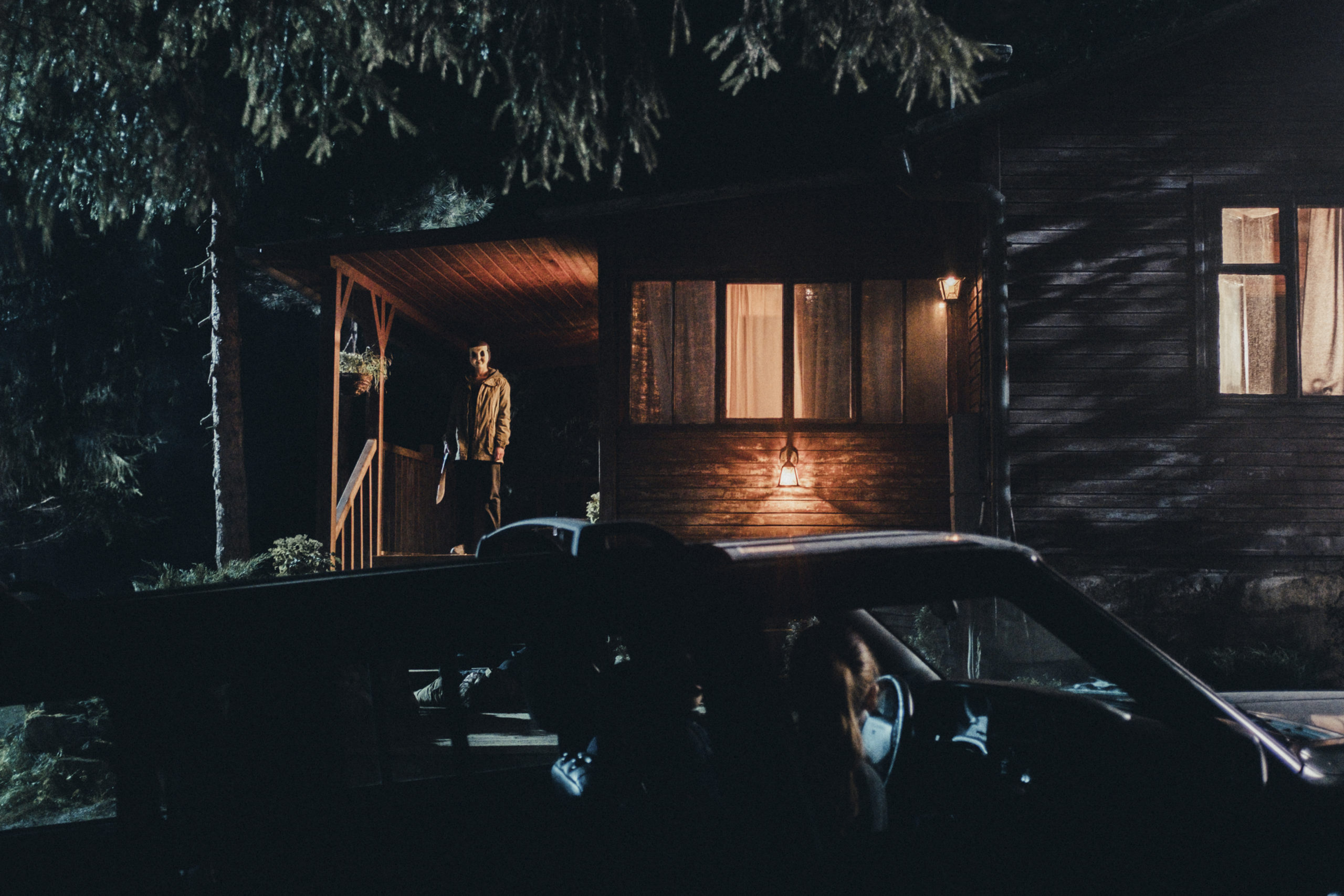
1. The opening music cue was inspired by The Shining.
The film’s opening establishing shot roving over the woods — with Bratislava, Slovakia standing in for the small town of Venus, Oregon — evokes the beginning of Stanley Kubrick’s The Shining, which was also a point of reference for the score.
“When we were scoring this, we looked at The Shining,” says Courtney Solomon, referring to Wendy Carlos’ iconic main title theme. “‘Cause we were looking for how, even though it’s dated, they were in that open, sort of everything environment, musically.”
Justin Caine Burnett (I’ll Always Know What You Did Last Summer, 9-1-1: Lone Star) composed the score.
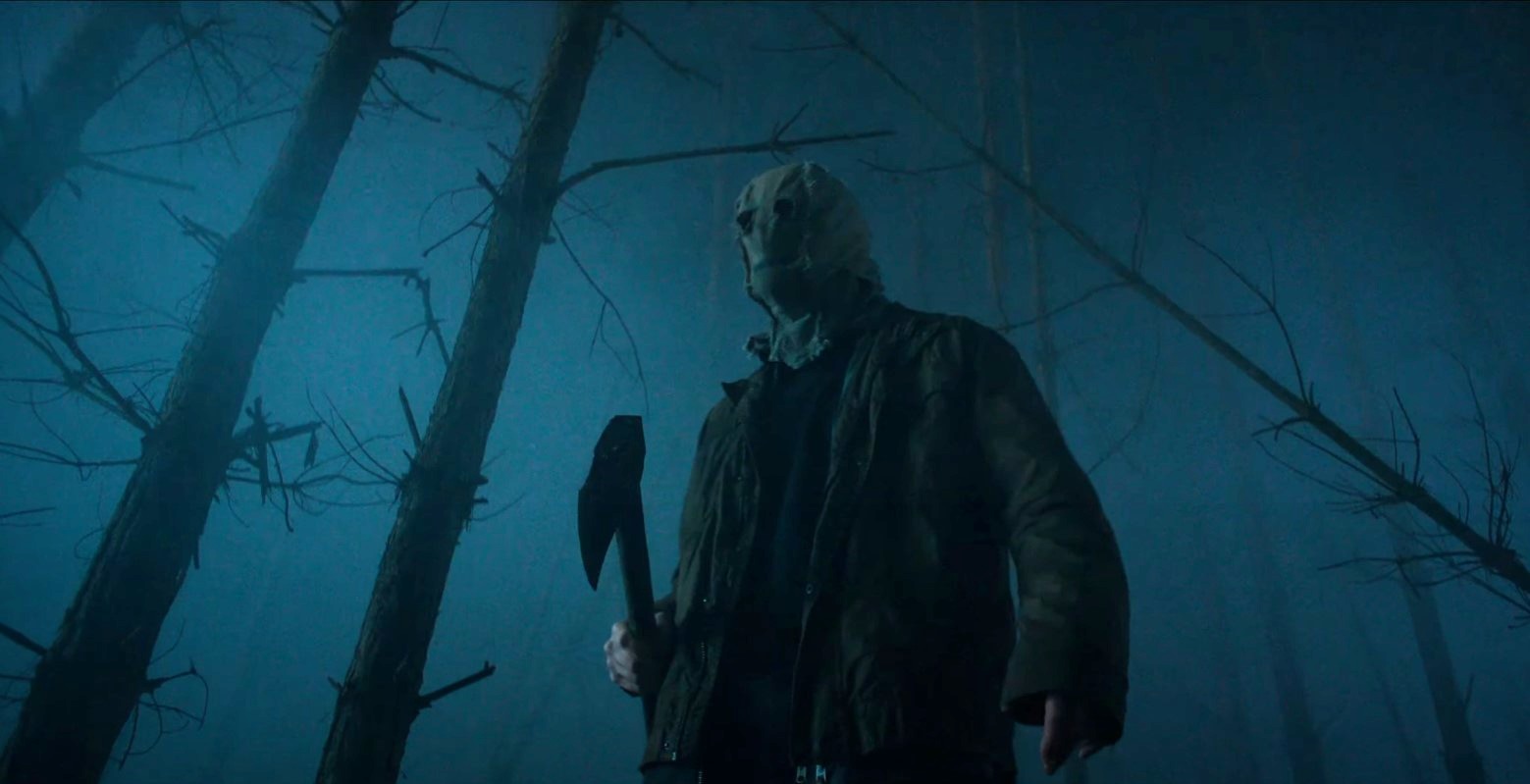
2. The cold open features an important character to the trilogy.
Shot together like one long movie, The Strangers trilogy will take place over a four-day period, with each subsequent entry picking up immediately after its predecessor’s finale.
Chapter 1‘s cold open features actor Ryan Bown — doing his own stunts, as Petsch points out — as a character who will play a bigger role in the coming installments.
“Jeff Morell, we’ll come to find out who this guy is as we go through all three chapters, but we sort of begin here,” Solomon notes.
“He’s a pretty important piece to this puzzle,” teases Petsch. “Some might say the piece.”
They also hint that viewers haven’t seen the last of Rachel Shenton’s Debbie, who Petsch’s Maya talks to on FaceTime, along with many of the townspeople from the diner scene.

3. Petsch was terrified of the project due to her love of the original film.
The shadow of the original Strangers looms large over Chapter 1. Petsch is “such a fan” that she was hesitant about doing a new version:
“I was terrified to touch that property. I think it’s an incredibly perfect horror film. I’ve seen so many horror films, and I feel like it’s one of the only ones that’s truly scared me to my bones, that I still think about all the time. So as we were trying to expound upon that story, with the second and third movies, we had to naturally repel the first story.”
Solomon similarly thinks highly of the original:
“I love the original Strangers. I wasn’t as big a fan of the sequel [2018’s The Strangers: Prey at Night], because it was just another story in a trailer park with the Strangers. I didn’t love that two of the Strangers got killed. That was just me personally; there are people that liked it. I was like, ‘I’d like to do something more interesting.’ In order to do it, to find that balance of retelling what made the first one so great as the basis to be able to launch off and tell the rest of the story.”
Petsch adds, “As we know, at the end of the first one, one of the last shots is Liv [Tyler]’s eyes opening. I’ve always wondered what happens after that.”
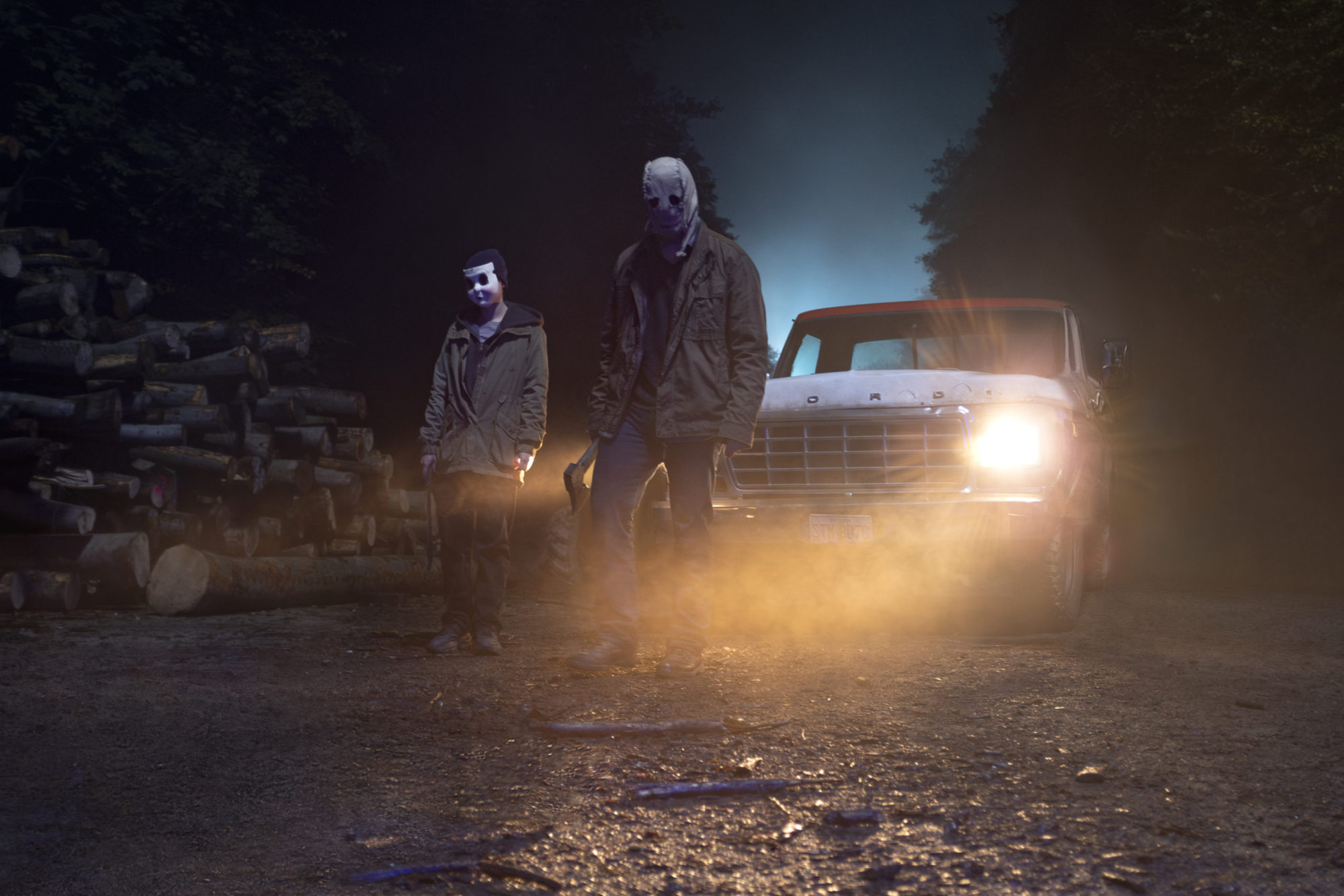
4. The killers’ hair is concealed to hide their identity.
Although the filmmakers opted to keep the look of the titular Strangers true to the original, Dollface and Pin-Up Girl’s hair is now concealed. This was a “purposeful change” to hide their identities, which will presumably be revealed later in the trilogy.
“We had a specific reason for doing it, obviously, because you do end up meeting a bunch of the folk from this small town,” explains Solomon. “You don’t know who’s wearing the mask, so if we had given up the hair that would make that identification a little bit easier.”

5. Petsch conceived the shower scene based on a personal fear.
In addition to starring in all three films, Petsch is an exclusive producer on the trilogy. More than a mere vanity credit, she had creative input throughout the stages of production, including the addition of Chapter 1‘s shower scene.
“This was not in the original script, the shower. Maybe our first week we were talking about what would be the scariest thing for me if I was in a situation like this,” she recalls. “I shared with you that every time I take a shower and I’m at the point where there’s suds of soap in my eyes and I’m shampooing, I’m always sure that’s when the serial killer’s gonna walk in. So we wrote this in, because I think that must be a common experience.”
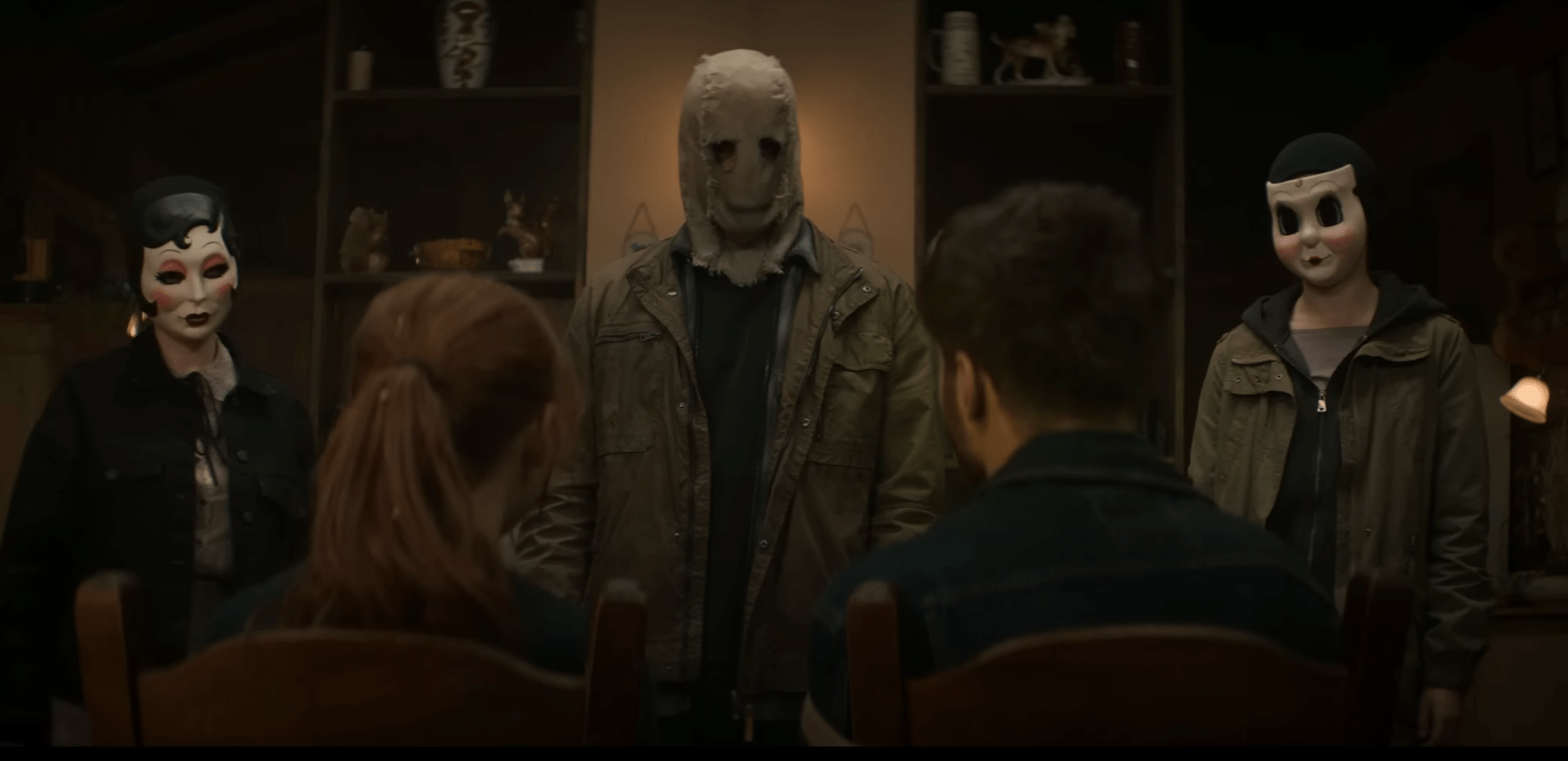
6. Remaking the original film was a conscious decision to kick off the trilogy.
It’s not until the end titles that the pair directly address the thought process behind launching the reboot trilogy with a retread of the original.
“Some people may go and watch this and go, ‘Oh, my god. It was a remake of the original.’ But actually this is just act one of our giant movie! If you watched it as a whole, then you’d be like, ‘Oh, shit. That’s just where it started,” says Solomon. “This is the 90-minute setup of the entire thing.”
Petsch concurs, “Don’t get me wrong. I also feel like the original is so good that it would be crazy to just do a remake of the original, but in order to tell the story that we were trying to tell, you kind of have to go back and do a repurposing of that story with these two new characters.”
“They did the whole first movie, the original, amazing, but that’s the jumping off point. This entire giant movie that’s become three chapters was done with a lot of love,” Solomon concludes.
The Strangers: Chapter 1 is available now on 4K Ultra HD, Blu-ray, DVD, and Digital.
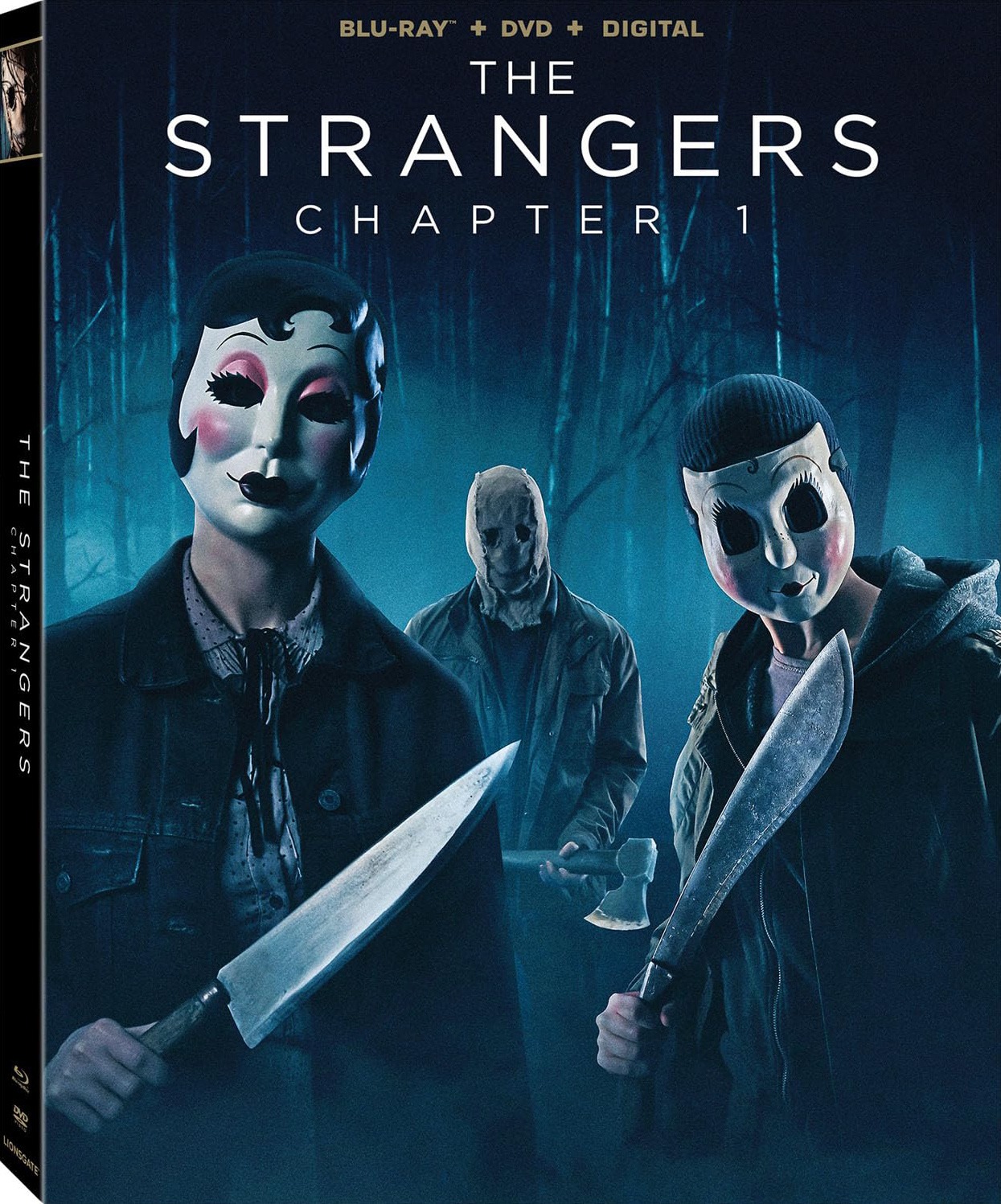
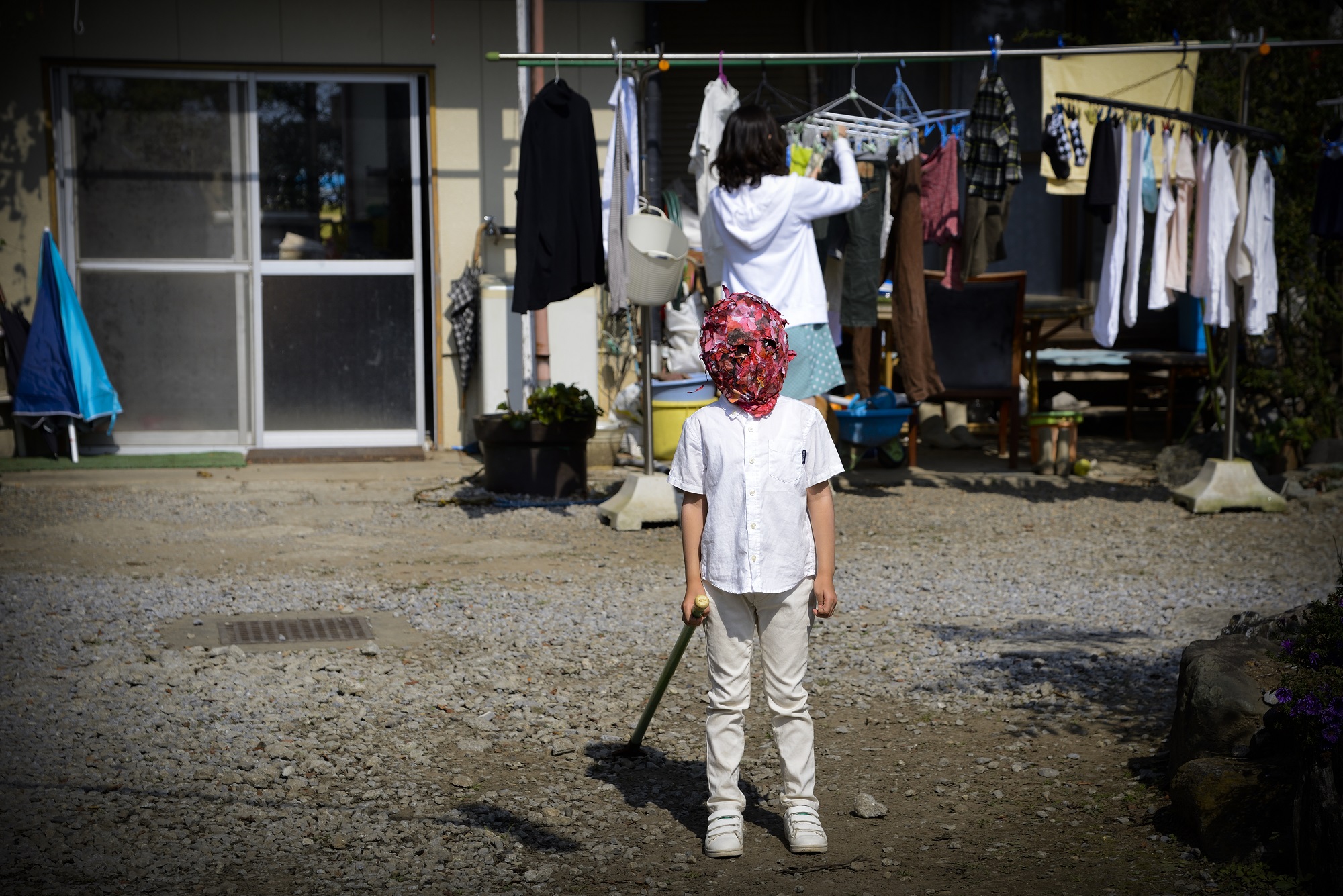
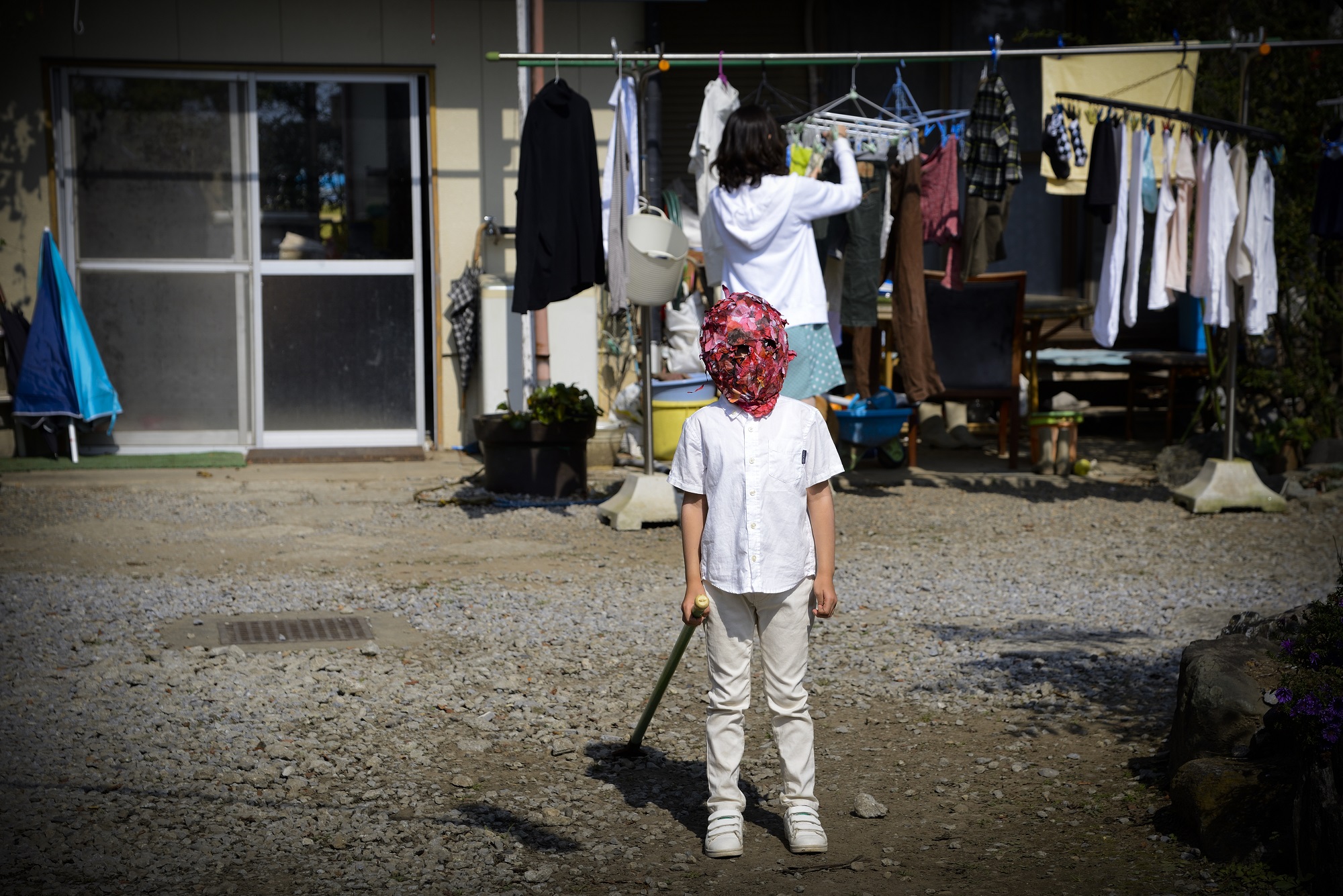
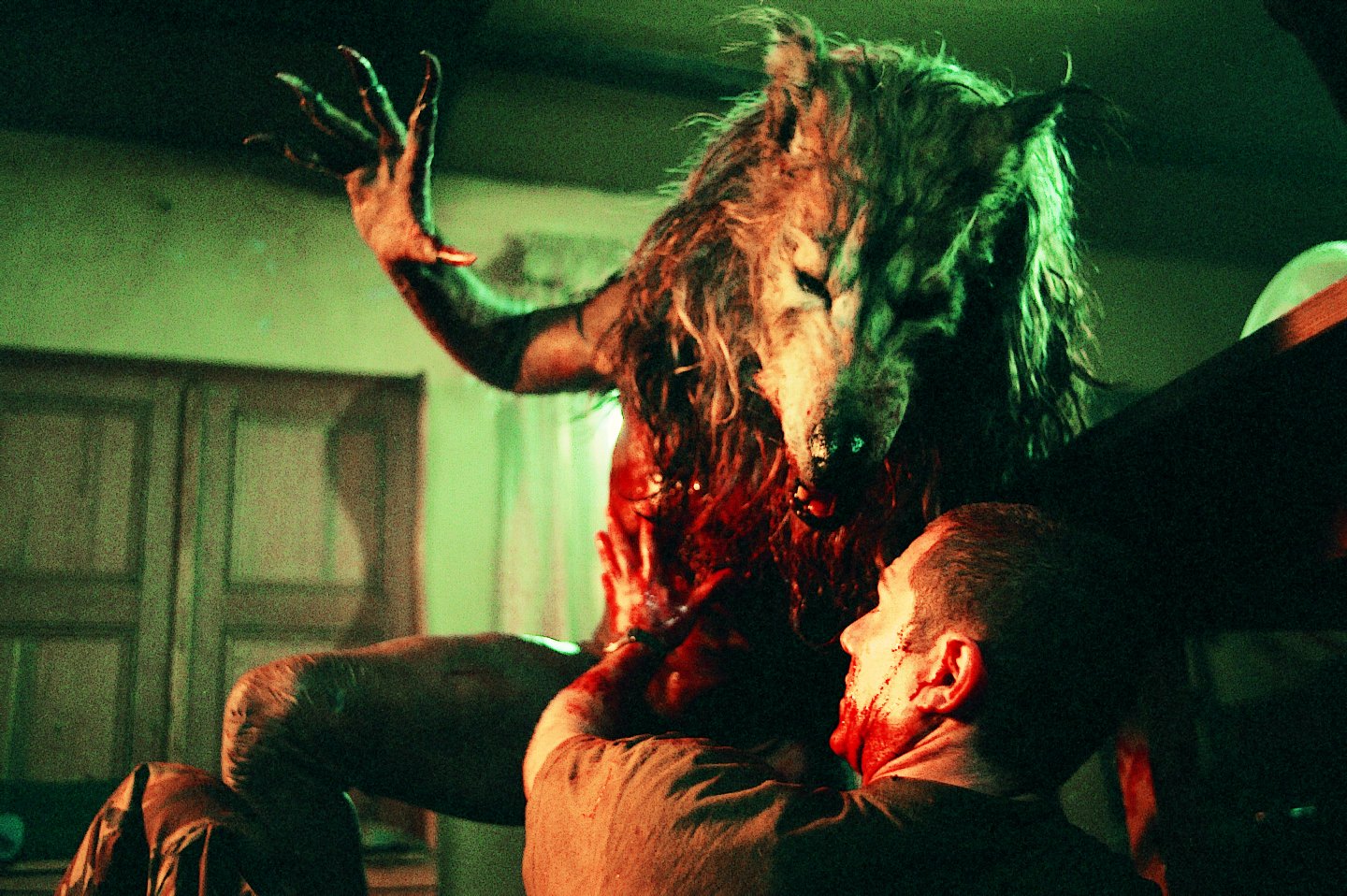
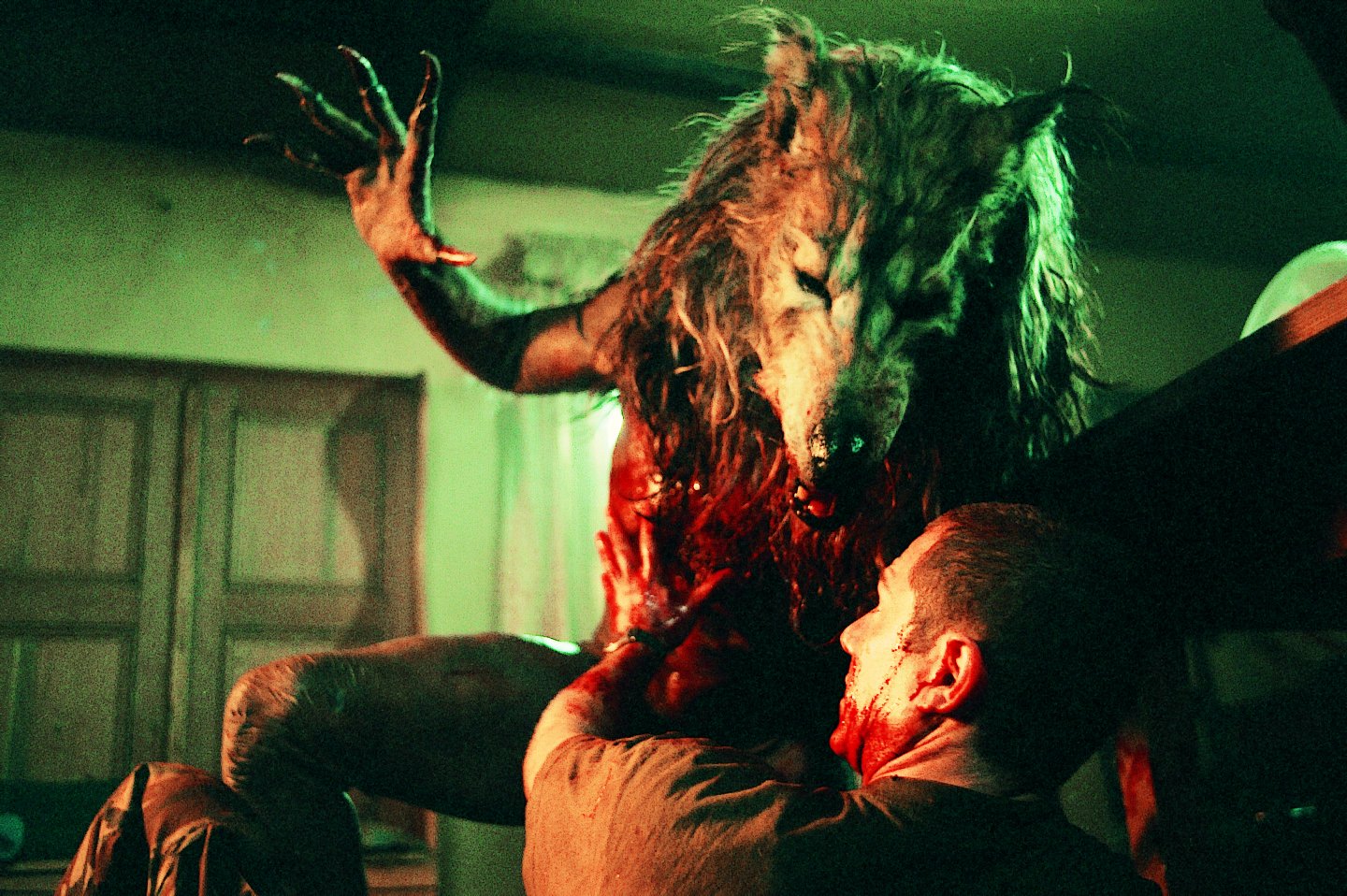
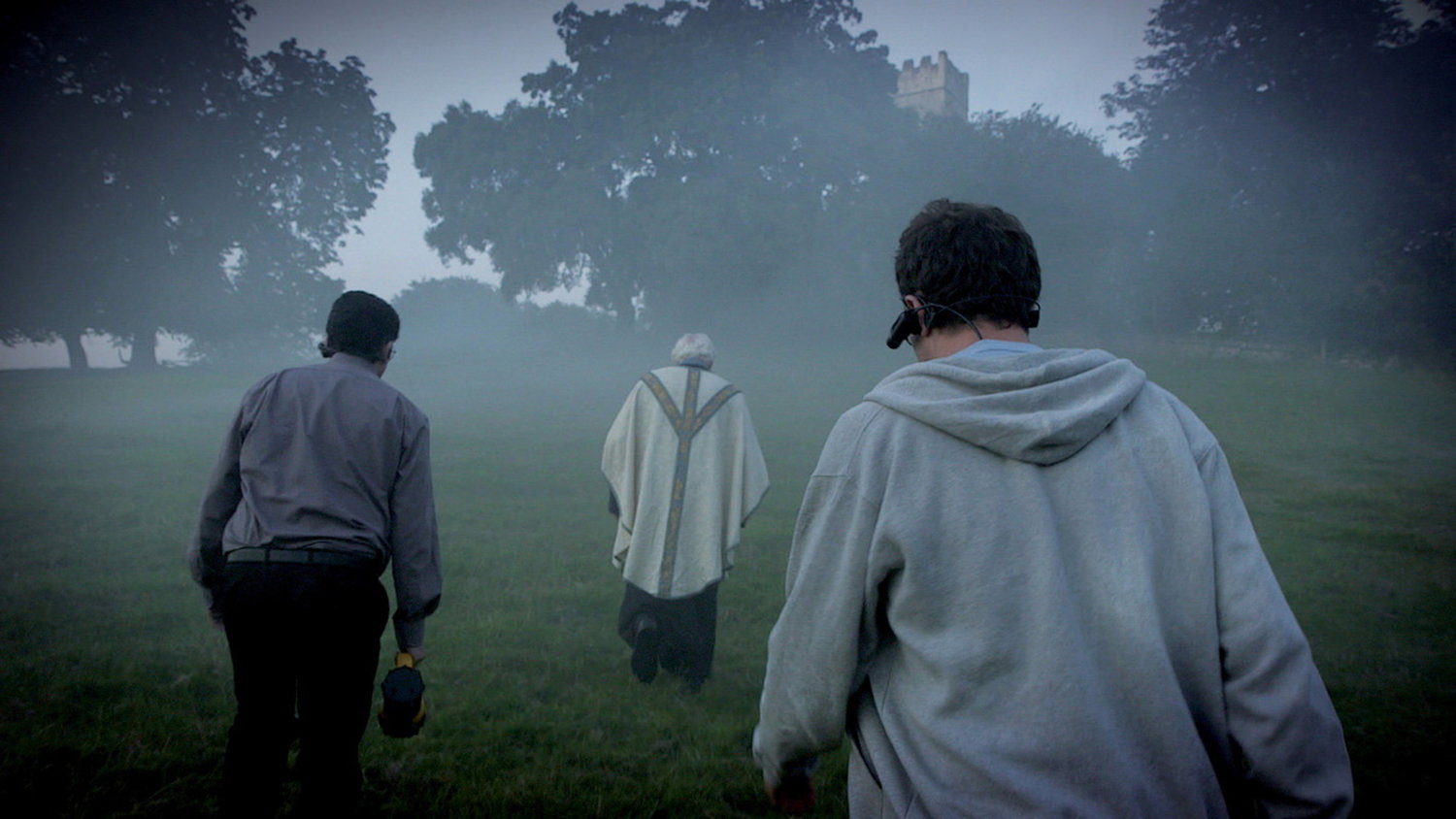



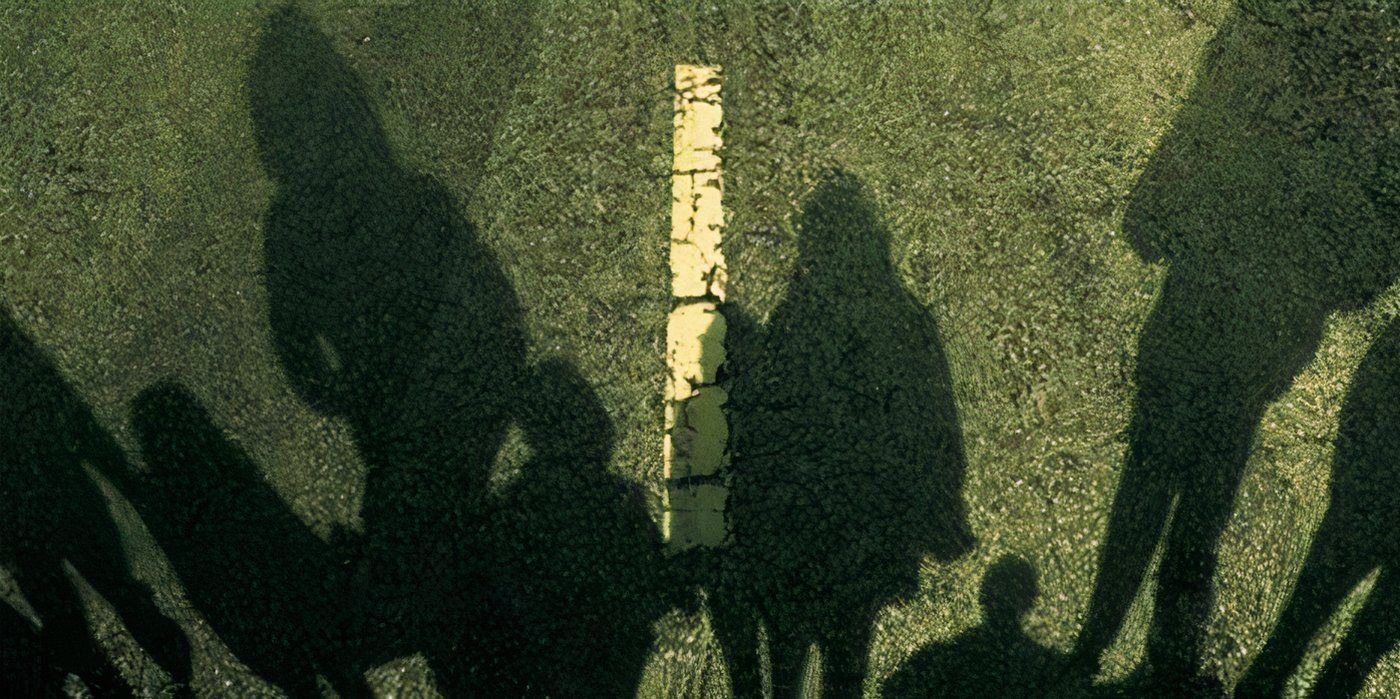



You must be logged in to post a comment.